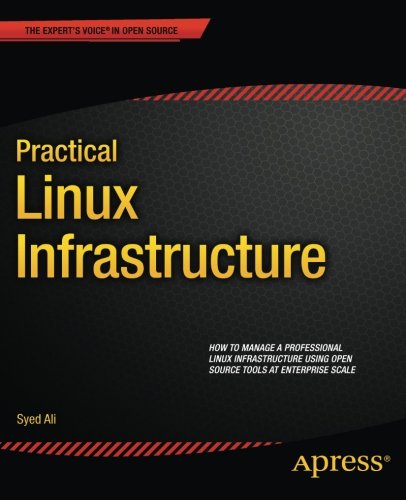

Most ebook files are in PDF format, so you can easily read them using various software such as Foxit Reader or directly on the Google Chrome browser.
Some ebook files are released by publishers in other formats such as .awz, .mobi, .epub, .fb2, etc. You may need to install specific software to read these formats on mobile/PC, such as Calibre.
Please read the tutorial at this link: https://ebookbell.com/faq
We offer FREE conversion to the popular formats you request; however, this may take some time. Therefore, right after payment, please email us, and we will try to provide the service as quickly as possible.
For some exceptional file formats or broken links (if any), please refrain from opening any disputes. Instead, email us first, and we will try to assist within a maximum of 6 hours.
EbookBell Team

4.3
8 reviewsPractical Linux Infrastructure teaches you how to use the best open source tools to build a new Linux infrastructure, or alter an existing infrastructure, to ensure it stands up to enterprise-level needs. Each chapter covers a key area of implementation, with clear examples and step-by-step instructions.
Using this book, you’ll understand why scale matters, and what considerations you need to make. You’ll see how to switch to using Google Cloud Platform for your hosted solution, how to use KVM for your virtualization, how to use Git, Postfix, and MySQL for your version control, email, and database, and how to use Puppet for your configuration management. For enterprise-level fault tolerance you’ll use Apache, and for load balancing and high availability, you'll use HAProxy and Keepalived. For trend analysis you’ll learn how to use Cacti, and for notification you’ll use Nagios. You’ll also learn how to utilize BIND to implement DNS, how to use DHCP (Dynamic Host Configuration Protocol), and how to setup remote access for your infrastructure using VPN and Iptables. You will finish by looking at the various tools you will need to troubleshoot issues that may occur with your hosted infrastructure. This includes how to use CPU, network, disk and memory management tools such as top, netstat, iostat and vmstat.
Author Syed Ali is a senior site reliability engineering manager, who has extensive experience with virtualization and Linux cloud based infrastructure. His previous experience as an entrepreneur in infrastructure computing offers him deep insight into how a business can leverage the power of Linux to their advantage. He brings his expert knowledge to this book to teach others how to perfect their Linux environments. Become a Linux infrastructure pro with Practical Linux Infrastructure today.
What youll learn• Create networks, firewalls, load balancers
• Install Postfix, Cacti, Nagios, Apache, MySQL
• Using Google Cloud Platform (GCP) services
• Trouble shootings tools such as top, tcpdump, iostat, vmstat
• Using iptables to protect your host
• Install a GIT server for source code configuration management
• Use rlog for log collections
This book is ideal for Linux system administrators who are currently managing small to medium size Linux infrastructure environments and would like to learn how to manage enterprise-level infrastructures. You will be familiar with basic system administration, or site reliability engineering work, but want to learn how to build significant, pro-level Linux infrastructure.
Table of Contents2. Chapter Two: Hosted Cloud Solutions Using Google Cloud Platform
3. Chapter Three: Virtualization with KVM
4. Chapter Four: MySQL, Git, Postfix
5. Chapter Five: Configuration Management with Puppet
6. Chapter Six: Apache for Enterprise-level Fault Tolerance
7. Chapter Seven: Monitoring with Nagios & Trend Analysis with Cacti
8. Chapter Eight: DNS Using Bind and DHCP
9. Chapter Nine: Log Collection, OpenVPN, Iptables
10. Chapter Ten: Troubleshooting Tools